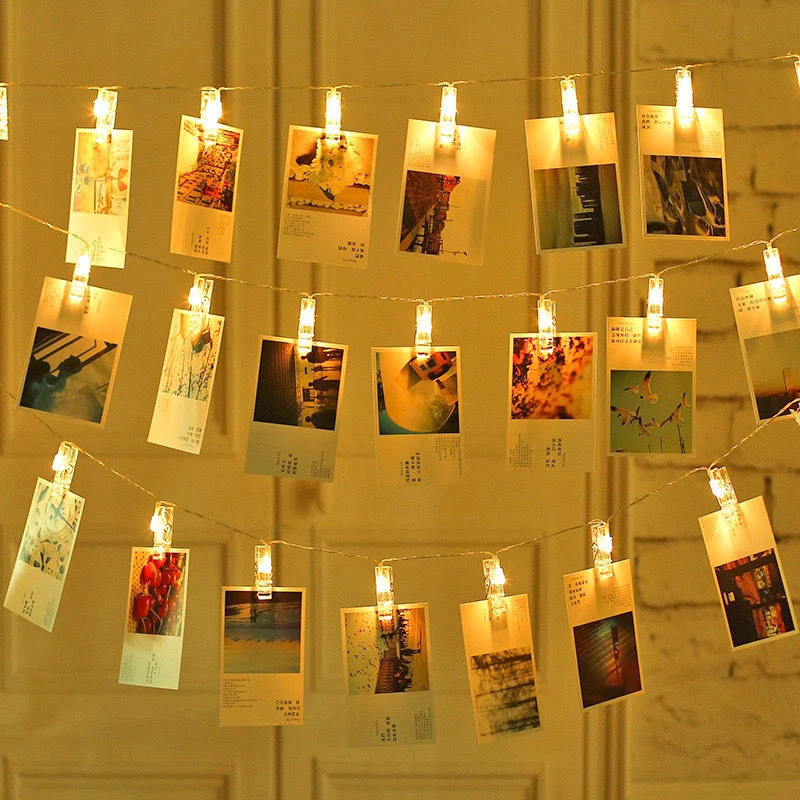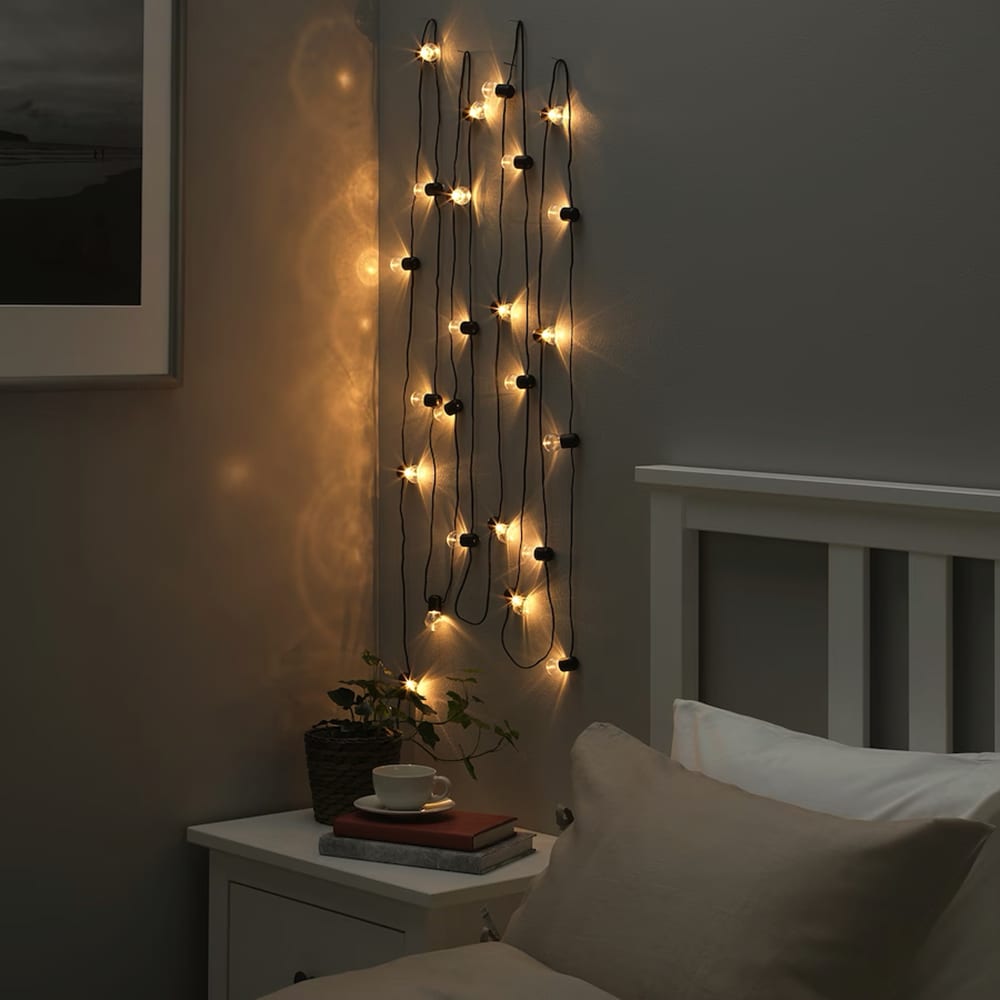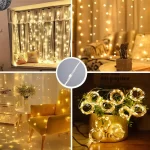String lights can transform a room, patio, or any space into a cozy and inviting area with their soft, ambient glow. Whether you’re decorating for a party, creating a relaxing ambiance, or adding a whimsical touch to your living space, knowing how to hang string lights effectively can make a significant difference. Here’s a comprehensive guide to help you illuminate your space with style and ease.
Planning Your String Light Display
Before diving into hanging your string lights, it’s essential to plan your display carefully. Consider the layout of the room or outdoor area where you want to hang the lights. Visualize where the power source is and where you want the lights to start and end. Measure the length of the area you plan to cover with the lights to ensure you have enough string lights to reach your desired effect without falling short.
Choosing the Right String Lights
String lights come in various types and styles, so choosing the right one depends on your decor style and the ambiance you want to create. Options include classic incandescent bulbs, energy-efficient LED lights, and decorative globe lights. LED lights are durable and energy-efficient, making them a popular choice for both indoor and outdoor use. Consider the color temperature of the lights as well—warm white creates a cozy atmosphere, while cool white or multicolored lights can add a festive vibe.

Preparing Your Wall or Surface
Preparing the wall or surface where you’ll hang the string lights is crucial for ensuring they stay secure and look good. Clean the surface thoroughly to remove dust and debris that could interfere with adhesive hooks or clips. For outdoor use, ensure the surface is dry and free from moisture to prevent damage to the lights and electrical connections.
Tools and Materials You’ll Need
Gather the necessary tools and materials before you start hanging your string lights. Depending on your chosen method, you may need adhesive hooks, clips, nails, or screws to secure the lights to the wall. Extension cords and power strips can help you reach distant power sources, especially for outdoor setups. Consider using a ladder or step stool if you’re hanging lights in high or hard-to-reach places.
Techniques for Hanging String Lights Indoors
For indoor spaces, there are several techniques you can use to hang string lights effectively. Adhesive hooks are ideal for temporary setups and are easy to remove without damaging walls. Arrange the lights in a zigzag pattern or along the perimeter of the room for even distribution of light. If you prefer a seamless look, hide the cords behind furniture or along the edges of walls using cord clips or cable covers.
Techniques for Hanging String Lights Outdoors
Outdoor string lights can create a magical atmosphere for garden parties, weddings, or simply relaxing evenings on the patio. Use guide wires or tension rods to support the lights and prevent sagging over long distances. Wrap lights around pergolas, trellises, or tree branches for a whimsical effect. Ensure outdoor lights are weatherproof and rated for outdoor use to withstand rain, wind, and sun exposure.
Creating Patterns and Designs
Get creative with your string light display by experimenting with different patterns and designs. Create a canopy effect by crisscrossing lights overhead, or outline shapes such as hearts or stars for special occasions. For a rustic look, drape lights along wooden beams or fence posts. Mixing different types of string lights, such as globe lights with fairy lights, can add depth and texture to your display.
Safety Considerations
When hanging string lights, safety should always be a priority. Ensure that all electrical connections are secure and protected from moisture to prevent short circuits or electrical hazards. Use outdoor-rated extension cords and power strips designed for wet locations if using lights outdoors. Avoid overloading electrical outlets and follow manufacturer guidelines regarding the maximum number of string lights that can be connected together.
Testing Your String Lights
Before completing your display, test the string lights to ensure all bulbs are working correctly. Plug in the lights and inspect each bulb for any signs of damage or malfunction. Replace any burnt-out bulbs or faulty strands before hanging them to avoid disruptions to your display later on. Testing the lights beforehand also allows you to adjust their positioning or brightness to achieve the desired ambiance.

Maintenance and Care Tips
To prolong the lifespan of your string lights, practice proper maintenance and care. Keep the lights clean by gently wiping them with a soft cloth to remove dust and dirt. Store lights in a dry, cool place when not in use to prevent damage from humidity or extreme temperatures. Inspect the wiring and bulbs regularly for signs of wear or damage, and replace any worn-out parts promptly to avoid safety hazards.
Enhancing Your Space with String Lights
Once your string lights are hung and illuminated, step back and admire the transformation they bring to your space. Adjust the positioning or brightness of the lights as needed to achieve the perfect ambiance for different occasions. Whether you’re hosting a party, enjoying a quiet evening at home, or adding a festive touch to a celebration, string lights can enhance any environment with their warmth and charm.
Choosing the Right Cleaning Products
When selecting cleaning products for your awning, it’s crucial to opt for those specifically designed for awning materials. These products are formulated to effectively clean without causing damage to the fabric or its protective coatings. Avoid using bleach or harsh chemicals unless explicitly recommended by the awning manufacturer, especially for stubborn mold stains. These substances can degrade the fabric and its waterproof coatings over time.
Biodegradable and environmentally friendly cleaners are ideal, particularly if your awning is situated near plants, grass, or other landscaping. These cleaners minimize the impact on surrounding vegetation and are safer for the environment overall. Look for products that are labeled as safe for use on outdoor fabrics to ensure compatibility with your awning material.
Additionally, consider the cleaning method recommended by the manufacturer of your specific awning model. Some materials may require gentle scrubbing with a soft brush, while others can tolerate a more vigorous cleaning approach. Always follow the manufacturer’s guidelines to avoid inadvertently causing damage during the cleaning process.
By choosing the right cleaning products and methods, you can effectively maintain the appearance and longevity of your awning while minimizing the risk of mold growth and other issues. Regular maintenance and timely cleaning are key to enjoying your awning for years to come.
Conclusion
Hanging string lights on a wall or in an outdoor space allows you to unleash your creativity and personalize your environment. By choosing the right type of lights, planning your display carefully, and following proper installation techniques, you can create a stunning lighting arrangement that enhances the beauty and ambiance of any space. Whether for everyday use or special occasions, string lights offer a versatile and stylish way to illuminate and decorate your surroundings.
Cleaning mold from your awning is an essential part of its upkeep, ensuring it remains a functional and attractive feature of your outdoor space. By using the right cleaning techniques and products suited to your awning’s material, you can effectively remove mold while preserving the fabric’s integrity. Remember to conduct regular inspections and maintenance to prevent mold growth and extend the lifespan of your awning.

